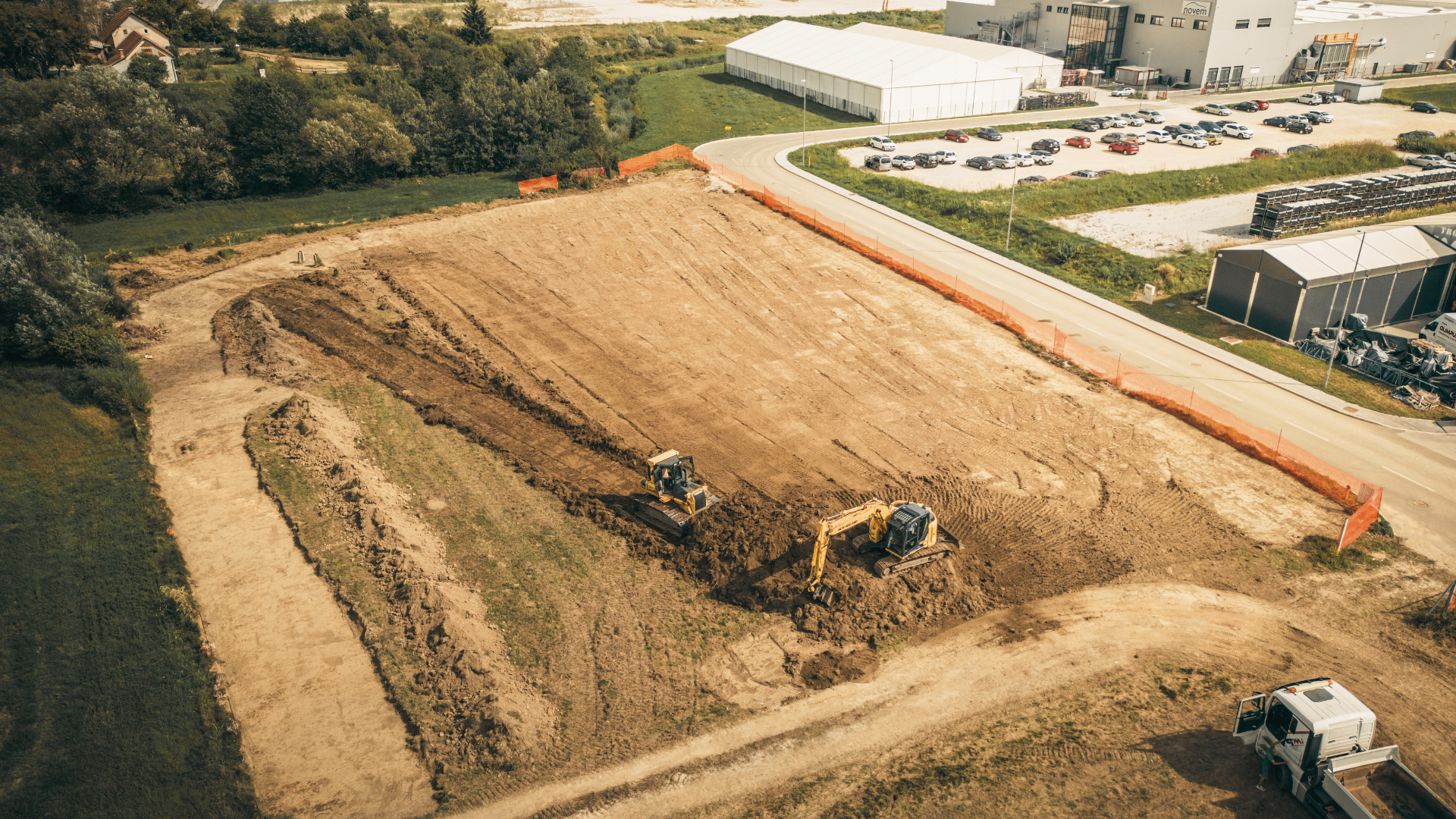Navigating a Perfect Storm: Insolvency Risks Clash with Unprecedented Housing Demand
The NSW construction industry is navigating a period of intense contradiction and risk.
Overview
A record-breaking wave of builder insolvencies, with 1,567 firms collapsing in the last financial year, is creating severe counterparty risk and casting doubt on the state's ability to meet its housing targets [7]. This financial distress is compounded by developer feasibility challenges, escalating costs, and significant planning bottlenecks [4].
Adding to the pressure, the residential sector faces profound policy uncertainty, with federal debates over Build-to-Rent (BTR) investment threatening a pipeline of 80,000 homes [8] and state-level density reforms facing legal challenges in court [9]. In stark contrast, major projects in the renewable energy and commercial sectors are securing approvals, demonstrating a viable path forward for well-capitalised developments [2, 11]. This success, however, hinges on sophisticated community engagement and design excellence [5].
Meanwhile, targeted state government funding is creating a distinct and growing pipeline of work in regional and social infrastructure, offering opportunities for firms that can meet specialised procurement criteria [3, 6].
The Housing Supply Conundrum: Navigating Insolvency, Policy and Planning Hurdles
The NSW residential construction sector is facing a perfect storm of financial, regulatory, and political pressures that are severely undermining housing supply. The most acute symptom is a historic insolvency crisis, with construction company collapses nearly tripling in a decade to record highs in the 2024-25 financial year [7]. Industry leaders attribute this to a combination of escalating material and labour costs, high government charges, and the impact of CFMEU enterprise agreements, which have left many builders with no margin to absorb financial shocks [7]. This crisis directly threatens NSW's ability to deliver its 377,000-home target under the National Housing Accord [7].
These financial pressures are exacerbated by significant roadblocks in the development pathway. Developers report that feasibility is increasingly skewed towards high-priced luxury apartments, as rising costs make more affordable projects unviable [4]. Concurrently, the number of third-party builders is declining, partly due to the increasing compliance burden driven by regulatory tools like iCIRT, pushing many to less complex sectors like industrial property [4]. Planning system inefficiencies persist, with assessment times for Housing Delivery Authority (HDA) Expressions of Interest doubling from six to twelve weeks, creating costly delays [4].
This challenging operational environment is compounded by significant policy uncertainty. At the federal level, the Coalition's move to block regulations supporting foreign investment in the build-to-rent (BTR) sector threatens a potential pipeline of 80,000 new rental homes nationally [8]. This has been labelled a "wrecking ball policy" by industry groups, creating instability and deterring the institutional investment needed to boost supply [8]. Adding to this, the ACTU is advocating for significant tax reforms, including limiting negative gearing to a single investment property, which could further cool investor demand [10]. At the state level, the government’s own low- and mid-rise housing reforms are now subject to a court challenge, creating legal uncertainty for developers planning projects under the new rules [9].
Major Projects Pipeline: Securing Approvals in a Complex Environment
While the residential sector struggles, the pipeline for major projects in NSW remains robust, though navigating the approval process requires increasing sophistication. The successful approval of landmark State Significant Developments (SSDs), such as Charter Hall’s $925 million mixed-use tower opposite Hyde Park [11] and AGL’s 1.3GW Pottinger Energy Park in the SW REZ [2], underscores that large-scale investment is proceeding. These approvals highlight the critical factors now necessary for success: demonstrable public benefit and authentic community engagement.
Charter Hall’s project, for instance, secured approval for a height increase after demonstrating significant public benefits, including a 51.4% reduction in overshadowing on Hyde Park and the removal of all overshadowing on the Anzac Memorial on Anzac Day [11]. The project’s approval was also contingent on a design excellence competition, signalling the high bar set by planning authorities for developments of this scale [11]. Similarly, the Pottinger wind farm’s approval by the Independent Planning Commission followed a thorough process of addressing over 50 public objections and extensive stakeholder meetings [2].
The importance of genuine engagement is starkly illustrated by a comparison of two SSDs in Maules Creek [5]. While a solar farm developer (FRV) earned community trust through collaborative engagement and co-designing a $1.45 million benefit fund, a coal mine extension was criticised for a "tick-the-box" approach to its Social Impact Assessment (SIA), which failed to build social licence despite formal compliance [5]. This demonstrates that mere adherence to the SIA Guideline is insufficient. As major international players like Acciona position themselves for New Zealand's and Australia's multibillion-dollar infrastructure pipelines, the competitive landscape is intensifying [1]. For developers and contractors targeting these large-scale opportunities, the ability to genuinely engage with communities and deliver clear public value is now a decisive commercial advantage.
State-Funded Initiatives: Opportunities in Regional and Social Infrastructure
Away from the volatile private residential market, the NSW Government is creating a significant and stable pipeline of work through direct investment in regional and social infrastructure. This targeted funding presents distinct opportunities for contractors able to meet specialised procurement requirements. In the Northern Rivers, the government has committed to delivering over 355 new public and community homes by June 2027 and is injecting $11.5 million into six key infrastructure projects, including a regional athletics facility and a cold storage facility in Casino [6]. This program signals a clear government priority to address both the acute housing crisis and economic development in the region [6].
A key feature of this emerging market is the focus on social outcomes and specialised design. A $6.2 million project to build a six-unit crisis accommodation facility in Walgett Shire, led by the Murdi Paaki Regional Housing Corporation, explicitly requires a "culturally-safe, safety-specific, and trauma-informed design" [3]. This project, part of the state's "Core and Cluster" program, highlights a growing demand for builders with proven expertise in culturally responsive construction and Indigenous engagement [3]. The initiative is also tied to broader "Closing the Gap" targets, indicating that future government tenders may increasingly weigh a contractor's ability to contribute to social policy objectives [3].
For construction firms, these state-funded programs offer a diversified revenue stream with a different risk profile compared to private development. Success in this segment depends not only on construction capability but also on a demonstrated ability to partner with community organisations, adhere to specific social and cultural guidelines, and deliver projects that provide lasting community benefit [3, 6]. This represents a strategic opportunity for firms looking to build expertise in the growing social infrastructure sector.
Takeaways
Navigating Insolvency Risk and Contractual Protections
The record 1,567 construction insolvencies in NSW [7] create extreme counterparty risk, demanding heightened legal diligence from all industry participants. Principals and head contractors must intensify due diligence on downstream partners, moving beyond marketing materials to verify credentials and financial stability [7]. Contractual protections are paramount. Project agreements must be reviewed to ensure they contain robust clauses for step-in rights, access to performance security, and clear grounds for termination in an insolvency event.
For subcontractors, the Building and Construction Industry Security of Payment Act 1999 (NSW) (SOPA) remains a critical tool for survival. Diligent and timely use of payment claims and the Act's adjudication processes is essential to secure cash flow and mitigate the risk of non-payment from a collapsing builder. The inadequacy of the $340,000 homeowners warranty insurance cap [7] also has legal implications for solvent builders; it underscores the need for rigorous defect management and quality assurance processes to avoid disputes that could strain financial viability and lead to costly litigation, further pressuring an already stressed sector.
The Evolving Landscape of Planning and Development Approval
The successful approval of major SSDs [2, 11] contrasts sharply with reported delays in other planning pathways, where HDA EOI assessment times have doubled to twelve weeks [4]. This highlights a complex and evolving planning environment governed by the Environmental Planning and Assessment Act 1979. For projects classified as SSDs, the key to a successful outcome is no longer just technical compliance. As the Maules Creek case study demonstrates, a superficial, "tick-the-box" approach to the Social Impact Assessment (SIA) Guideline can create significant community opposition and project risk [5].
Developers must now proactively build a case for their project based on genuine community engagement and clear public benefit, as seen in the Charter Hall approval [11]. Furthermore, the court challenge launched against the state's low- and mid-rise housing reforms [9] introduces significant regulatory uncertainty. Developers pursuing projects reliant on these reforms must seek immediate legal advice on the potential impacts of a successful legal challenge, which could invalidate approvals or necessitate costly redesigns, fundamentally altering project viability. This legal battle makes thorough due diligence on regulatory risk more critical than ever.
Responding to Shifting Policy and Investment Drivers
The intense political debates surrounding federal support for Build-to-Rent (BTR) [8] and the ACTU's proposed tax reforms targeting property investors [10] signal potential long-term shifts in the residential investment market. While these are federal issues, they will directly impact the feasibility of NSW projects that rely on investor pre-sales. Developers and their financiers must model scenarios with and without these incentives to accurately assess project risk and secure funding.
Concurrently, the NSW government is creating clear opportunities through targeted funding streams like the "Core and Cluster" program [3] and regional infrastructure funds [6]. To capitalise, firms must legally and commercially align their capabilities with specific government procurement requirements. These increasingly include non-financial criteria, such as delivering "culturally responsive design" [3] or implementing local employment strategies as mandated in the Pottinger Energy Park approval [2].
This requires a strategic pivot from purely commercial development models to those that can contractually commit to and deliver on specified social and public policy outcomes, which may require new joint venture structures or specialised consulting partnerships.
Final Thoughts
The NSW construction industry is currently a tale of two sectors. The residential housing market is grappling with a severe insolvency crisis [7] and a tangled web of regulatory hurdles and policy uncertainties that threaten to derail vital supply targets [4, 8, 9].
Survival in this space demands rigorous financial management and watertight contractual diligence. In parallel, a more resilient market exists for major infrastructure [1, 2], CBD renewal [11], and government-backed social projects [3, 6]. Here, success is increasingly defined by a firm's ability to navigate complex approvals under the Environmental Planning and Assessment Act 1979, demonstrate tangible public benefit [5, 11], and meet specialised procurement criteria.
The coming months will test the adaptability of all industry players, making strategic positioning and proactive risk mitigation more critical than ever.
-
The Australian | by Bridget Carter. (5 August 2025). Acciona eyes Fletcher Building’s construction division. https://www.theaustralian.com.au/business/dataroom/acciona-eyes-fletcher-buildings-construction-division/news-story/5d20c223b7154df7f777f5f8583e396a?btr=984c997b07d3c80cfd3a9bfc7ec0e1ff
-
Utility | by Katie Livingston. (1 August 2025). NSW wind project gets the green light. https://utilitymagazine.com.au/nsw-wind-project-gets-the-green-light/
-
National Indigenous Times | by Jarred Cross. (1 August 2025). More than bricks and mortar: Aboriginal-led construction behind safe housing for survivors of domestic and family violence. https://nit.com.au/01-08-2025/19416/not-just-bricks-and-mortar-aboriginal-led-construction-behind-safe-housing-for-domestic-and-family-violence
-
Real Estate Business | by Reporter. (Date not specified). Roadblocks in the housing delivery pathway: The top 3 challenges for developers. https://www.realestatebusiness.com.au/industry/30388-roadblocks-in-the-housing-delivery-pathway-the-top-3-challenges-for-developers
-
[5]. Renew Economy. (31 July 2025). Two energy projects, two vastly different approaches to community engagement. https://reneweconomy.com.au/two-energy-projects-two-vastly-different-approaches-to-community-engagement/
-
Lismore Times | by Angus Smith. (31 July 2025). State funds housing and infrastructure for Northern Rivers. https://timesnewsgroup.com.au/lismoretimes/news/state-funds-housing-and-infrastructure-for-northern-rivers/
-
NT News | by Jake McCallum,Thomas Sargeant. (31 July 2025). House of pain: NSW construction firms collapse at record rate. https://www.ntnews.com.au/news/nsw/house-of-pain-nsw-construction-firms-collapse-at-record-rate/news-story/08dcab34ed871c91286aee2b2dccd4ff?btr=c4e41e323c2ba5f43fbcbcdad7e32736
Download latest ASIC data here: https://download.asic.gov.au/media/au5il2lb/asic-insolvency-statistics-series-1-and-series-2-published-4-august-2025.xlsx - Mortgage Professional Australia. (31 July 2025). Coalition's stance on build-to-rent faces criticism amid housing shortage. https://www.mpamag.com/au/news/general/coalitions-stance-on-build-to-rent-faces-criticism-amid-housing-shortage/544329
-
WA Today | by David Barwell. (6 August 2025). Meet the Mosman accountant fighting the state’s housing reforms in court. https://www.watoday.com.au/national/nsw/meet-the-mosman-accountant-fighting-the-state-s-housing-reforms-in-court-20250801-p5mjl5.html
-
News.com.au | by Sophie Foster. (4 August 2025). Unions back explosive new crackdown on property tax breaks. https://www.news.com.au/finance/real-estate/renting/unions-back-explosive-new-crackdown-on-property-tax-breaks/news-story/0e7b353e4c3c67b161ec18fa80b21d4d?btr=c05ef439b77012fd59c4a5362b55712d
-
Urban Digest. (3 August 2025). Charter Hall’s $925m Tower Approved for Hyde Park Site. https://urbandigest.com.au/charter-halls-925m-tower-approved-for-hyde-park-site/
The Pulse collates the latest news and opinions from third-party sources. Links, snippets or text are generated by an artificial intelligence engine. The Pulse aggregates news reports and does not claim to have copyright to the content. We have not fact-checked that content and cannot vouch for its accuracy or completeness. Nor do we endorse the opinions expressed by the authors or primary publishers. The content is provided as general information only and should not be relied on as a substitute for professional advice. You should contact the source to verify any factual content as well as taking specialist advice that takes your personal objectives and circumstances into account.




.png)

.jpg)












-1.jpg)
.jpg)
